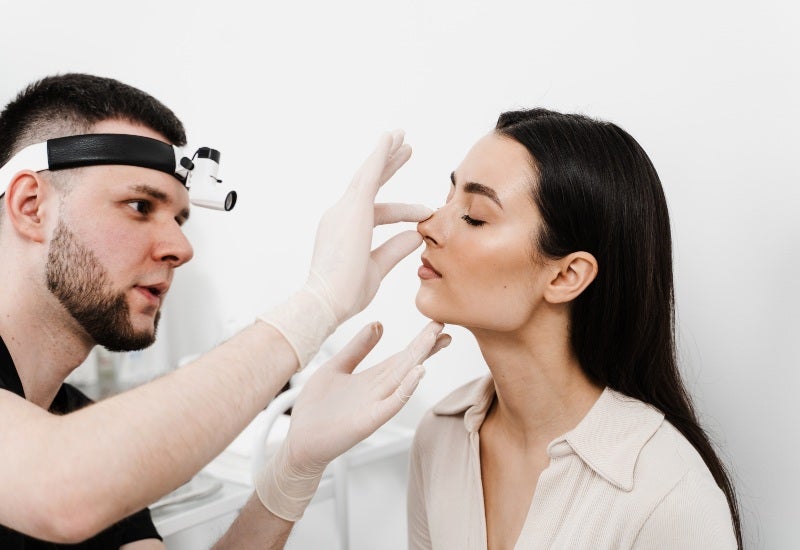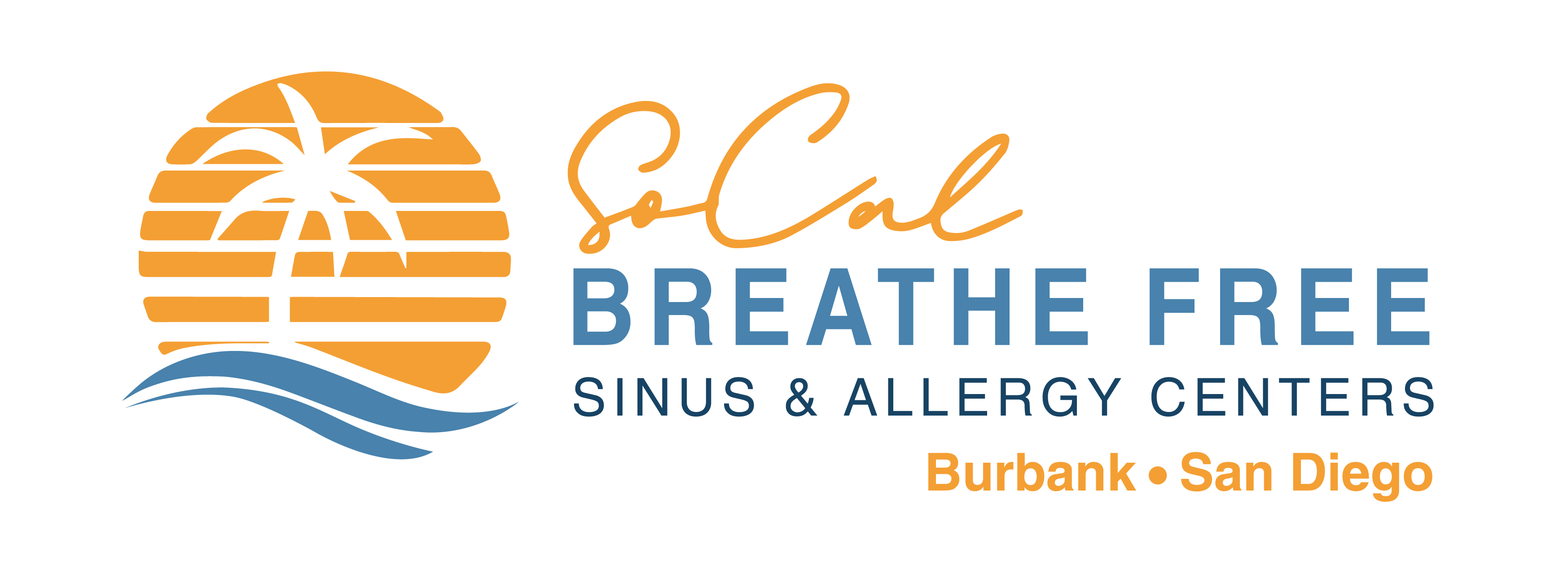Septoplasty Surgery in San Diego, CA
Septoplasty in San Diego, CA
Have you been struggling with nasal congestion, difficulty breathing, or frequent sinus infections? You may have a deviated septum. Septoplasty is a surgical procedure designed to correct this issue by straightening the nasal septum—the partition between your two nostrils. Our experienced ENT specialists at SoCal Breathe Free Sinus & Allergy Centers are here to help. We offer septoplasty in San Diego, CA, to correct a deviated septum and enhance your breathing quality.

Signs and Symptoms of a Deviated Septum
A deviated septum occurs when the nasal septum, which is the cartilage and bone structure that separates the two nasal passages, is significantly displaced to one side, leading to potential breathing difficulties and other related issues. This can make one nasal passage smaller than the other, leading to a variety of symptoms:
- Difficulty breathing through one or both nostrils
- Frequent nosebleeds
- Recurring sinus infections
- Noisy breathing during sleep
- Preference for sleeping on one particular side
What Causes a Deviated Septum?
Several factors can cause a deviated septum, including congenital conditions present at birth, injuries to the nose from accidents or sports, and even the natural aging process that can lead to changes in the nasal structure. Other potential contributors include chronic sinus infections that may alter the shape of the septum over time. Understanding these factors can help in addressing the symptoms associated with a deviated septum.
- Congenital Factors: Some people are born with a deviated septum due to the way their nasal structures develop during fetal growth.
- Injury or Trauma: A blow to the nose can displace the septum. Such injuries are common in contact sports and car accidents.
- Age-Related Changes: The normal aging process can also affect nasal structures, potentially worsening a previously minor deviation.
Assessment and Diagnosis
Diagnosing a deviated septum involves a thorough physical examination where a healthcare professional uses a nasal speculum to inspect the inside of your nose and reviews your medical history, looking for symptoms like breathing difficulties or sinus infections. You may need to discuss any prior nasal injuries or surgeries. In some cases, imaging tests, like a CT scan, may be ordered for a detailed view of your nasal structures, ensuring an accurate diagnosis and guiding potential treatment options.
Preparing for Septoplasty Surgery
Preparation is key to a successful septoplasty, a surgical procedure aimed at correcting a deviated septum to improve breathing and overall nasal function. Your doctor will provide specific instructions tailored to your individual needs, so be sure to follow them closely for the best outcome. This may include guidelines on medications, dietary restrictions, and what to expect on the day of the surgery. It’s important to arrange for someone to assist you post-surgery, as you may experience some discomfort and will need help during your recovery. Here’s how to get ready:
- Medical Evaluation: Your doctor will conduct a pre-surgery evaluation to ensure you’re a good candidate for septoplasty.
- Medications: You might need to stop taking certain medications, such as blood thinners, before the surgery.
- Smoking and Alcohol: Quit smoking and avoid alcohol in the weeks leading up to your surgery, as they can interfere with healing.
- Arrange Transportation: Since septoplasty is usually performed under general anesthesia, arrange for someone to drive you home after the procedure.
What to Expect from the Septoplasty Procedure
Septoplasty is a quick outpatient procedure that typically takes 60 to 90 minutes, allowing you to return home the same day. It starts with anesthesia for your comfort, followed by an incision inside the nostril to access and reshape the septum, which helps improve airflow and alleviate breathing difficulties. After reshaping, the incision is closed with sutures, and splints may be placed for support. The benefits of septoplasty include better breathing, less nasal obstruction, and an overall improved quality of life.
Postoperative Care and Septoplasty Recovery
Proper postoperative care is crucial for ensuring a smooth and effective recovery after surgery. Your doctor will provide specific guidelines tailored to your individual needs, which may include detailed instructions on how to care for your nose, manage any discomfort, and recognize signs of complications. They will outline when you can gradually return to your normal activities, such as exercising or resuming work. It’s essential to follow these tips closely, as adhering to post-operative care can significantly impact your healing process and the overall success of the procedure. Always feel free to reach out to your healthcare provider with any questions or concerns during your recovery.
- Rest: Take it easy for the first few days after surgery. Avoid strenuous activities.
- Elevate Your Head: Sleep with your head elevated to reduce swelling.
- Follow-Up Appointments: Attend all follow-up appointments with your surgeon to monitor your recovery.
- Avoid Blowing Your Nose: Refrain from blowing your nose for at least a week to prevent complications.
Find Relief from Nasal Obstruction
Septoplasty is highly effective for enhancing nasal function, boasting a success rate of over 80% in improving breathing and reducing nasal obstruction. Most patients report significant improvements in their quality of life after the procedure, and the benefits are often long-lasting, providing many with permanent relief from symptoms. Septoplasty surgery can be a life-changing solution for those struggling with a deviated septum. If you’re considering septoplasty, schedule a consultation to discuss your symptoms with our experienced ENT specialist in San Diego.
